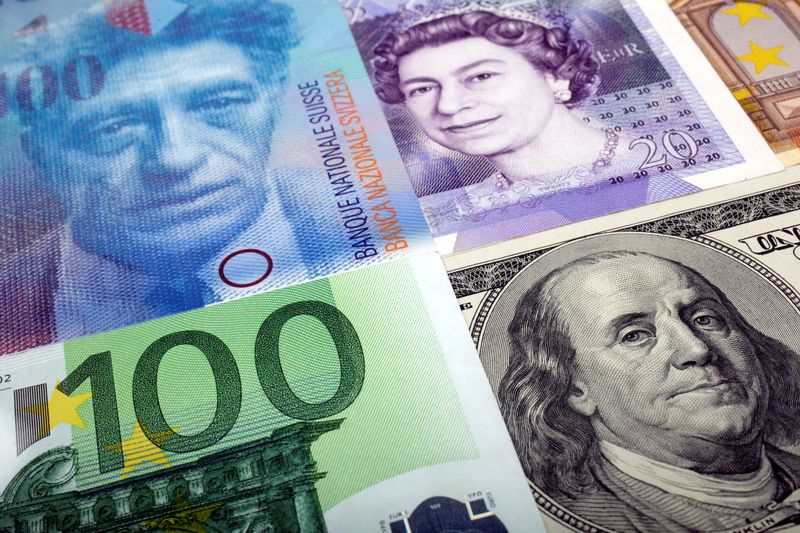Forex
Dollar extends gains against yen with US economic strength in focus

By Laura Matthews
NEW YORK (Reuters) -The dollar rose to a seven-week high against the yen on Thursday, while the sterling and euro fell amid on the U.S. economy is coming off the boil while traders watch for more data bolstering the case for a Federal Reserve rate cut this year.
May retail sales released this week were tepid and the labor market appears to be weakening. The number of Americans filing new claims for unemployment benefits fell last week, but was still more than expected, data released on Thursday showed, indicating the jobs market remained strong despite a gradual cooling.
“U.S. (purchasing managers’ index) tomorrow could provide more of a catalyst for a higher volatility day, so we’ll be keeping our eyes on that to wrap up the week,” said Helen Given, associate director of trading at Monex USA, in Washington.
The dollar hit its highest since April 29 against the yen and was last up 0.51% at 158.89 yen in New York trading. Traders remain on alert for signs of continued intervention by the Bank of Japan to boost a currency that hit 34-year lows in late April.
Yen markets have been rattled since a dovish Bank of Japan last week maintained its policy target and said it intends to soon release a plan to trim bond buying.
“I think the market was kind of disappointed in the Bank of Japan’s actions. It felt a bit like kicking the can down the road again for the yen for the market,” said Amo Sahota, director, Klarity FX, in San Francisco.
“Well, in that case, we’ll just carry on with a very simple carry trade that we’ve been doing. The Bank of Japan and the Ministry of Finance must be getting a little nervous or focusing back on the intervention risks.”
Japan’s top currency diplomat Masato Kanda said earlier on Thursday there is no limit to the resources available for foreign exchange interventions, Jiji News Agency reported.
Along with yen weakness, downturns in the euro and sterling have supported the , which tracks the currency against six peers, rise 0.4% to 105.61.
The euro was last down 0.34% against the dollar at $1.0708. It hit a session low of 1.0706, but remained above the six-week low of $1.0667 hit on Friday.
Sterling fell 0.42% to $1.2667, after hitting a five-week low in afternoon trading. Earlier in the day, the Bank of England left rates on hold, with some policymakers saying their decision not to cut was “finely balanced”.
The Swiss franc also fell after the Swiss National Bank lowered interest rates to 1.25%, following a cut in March.
The dollar climbed 0.7% to 0.8909 francs as the Swiss currency fell from around a three-month high after the rate cut, which came with forecasts predicting a further fall in inflation to 1.1% in 2025.
The dollar index rose after a volatile 10 days, with mixed U.S. economic data and political uncertainty in France that rocked European markets.

“All told, it looks like the dollar is going to head toward its fifth straight week of gains simply because the U.S. economic situation is not as bad as that of many of its peers,” said Given.
In cryptocurrencies, bitcoin rose about 0.4% to $65,105.

 Forex3 years ago
Forex3 years agoForex Today: the dollar is gaining strength amid gloomy sentiment at the start of the Fed’s week

 Forex3 years ago
Forex3 years agoUnbiased review of Pocket Option broker

 Forex3 years ago
Forex3 years agoDollar to pound sterling exchange rate today: Pound plummeted to its lowest since 1985

 Forex3 years ago
Forex3 years agoHow is the Australian dollar doing today?

 Cryptocurrency3 years ago
Cryptocurrency3 years agoWhat happened in the crypto market – current events today

 World3 years ago
World3 years agoWhy are modern video games an art form?

 Commodities3 years ago
Commodities3 years agoCopper continues to fall in price on expectations of lower demand in China

 Economy3 years ago
Economy3 years agoCrude oil tankers double in price due to EU anti-Russian sanctions



























